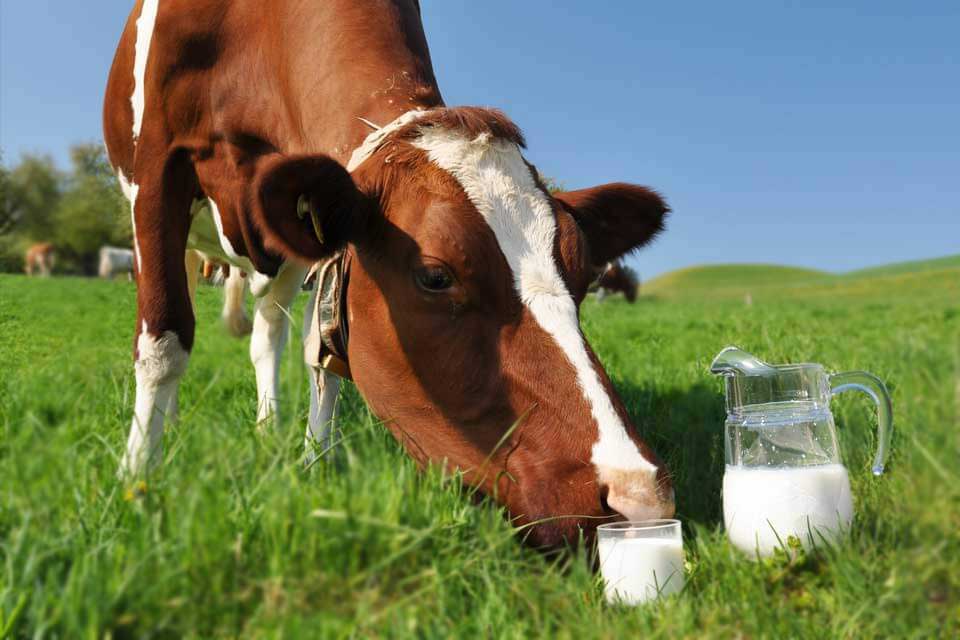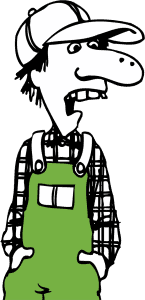
A TOMATO sauce bottle hangs from the roof in the middle of the Marles family’s dairy at Meningie, in South Australia.
Dangling from a piece of string in the 10-a-side double- up, the bottle is in easy reach for a quick squirt during milking.
But there isn’t a barbecue in the yard, nor are there any saus-age rolls, rather, Jamie Marles, his wife Tammy, their children Rhys, 13, Jake, 12 and Emma, 10, and Jamie’s brother, Haydn, use the bottle to apply a mixture they claim has boosted the health of their 200-head milking herd.
"It is about getting the product where it is meant to be going" Jamie said.
Over the past six years the family has used a powder called "supermint extra", mixing it into a paste to rub on cows' udders as a way to treat mastitis.
The powder is combined with a probiotic niix and incorporated into the bail with feed pellets made in Adelaide from a by product of pasta.
The family has seen fantastic results. In the first three weeks of using the mix and cream, the herd cell count dropped from 250,000 to 110,000 cells/mL, as well as a gradual improvement of the overall herd health.
"To get a cow’s cell count lower, her immune system has to be absolutely humming . . . if she does get an infection she can deal with it herself," Jamie said.
"We're attempting to control individual cell counts in lactating cows."
In-calf rates, as well as herd production, have increased.
Before they started the treatments, the cows averaged 5500 litres and despite the 'difficult' years of drought with 254mm of rainfall or less, the herd now averages 6500 litres.
Jamie said cows had been able to clear the 'climate wall' in late September because of the added nutrients.
He said they were in good health and able to adapt to the conditions as well as utilise available feed.
"The probiotic mix allows the cows to bounce back quicker after rain," he said.
Jamie hopes that when the season returns to 'normal', the herd will average 7000 litres with higher components than 4.3 per cent butterfat and 3.4 per cent protein.
"With a low cell count, their immune system is up and cranking so they are responsive. We know we could chase production," Jamie said.
Each year the cows receive between one and two tonnes of feed in the bail, depending on milk and feed price, which is combined with the probiotic mix. The Marles use a cement mixer and mineral dispenser to combine the probiotics and the pellets before the feed gets
transported into the dairy feeders. This ensures cows get the right amount of nutrients and also limits wastage.
As for the cream, it is applied to the udder at the "first sign of anything".
Keeping cows milking, especially the high-producing animals, has paid off in terms of litres in the vat and money in the pocket.
"Our culling rate has just disappeared, we have gone 18 months in the last six years without treating a cow with penicillin or culling," Jamie said. "Our goal is to get seven to eight lactations out of a cow." ‘Only five milkers were treated with dry cow last season and just four the previous season.
By applying cream to suspect udders as well as following Countdown Downunder guidelines, Jamie has stopped mastitis cross-contamination.
"Once the cows become carriers, you have 60 days to clean them up or you have trouble," he said.
Using a recently purchased Milk Checker 2000, he hopes to identify infected quarters of individual cows in a bid to cut costs by only using the cream exactly when and where it is needed.
The hand-held machine works by squirting 10-15 milli-litres of milk from a quarter into the cup on the end.
This process is repeated and then four scores, which demonstrate the level of infection, flash up on the screen.
Fresh cows are tested with the new machine as soon as they come into the dairy and if they pass, they are not tested again.
Being able to test cows them- selves enables the Marles family to take immediate action.
"We are not waiting 30 days for a herd test," Jamie said.
Part of the finishing touches. to the 740ha farm has been the construction of five new calving pads. Close to the dairy, in a
sheltered hollow, they are used in a rotation so the ground is kept clean to avoid mastitis.
Their concentration on maintaining a low cell count is important.
As National Foods suppliers, keeping below 150,000 cells a millilitre leads to quality incentives.
This will now be especially important with the new-season prices down 30 per cent on last season’s opening price.
The Marles also run beef cattle, grow crops for silage and do contracting work.
"We are having a fair crack at dairy," Jamie said.
"(But) I think that many people are going to go out and then there will be demand down the track, which is unfortunate," Jamie said.
Up to 100 Angus and Holstein-Angus cattle are run separate to the milkers and sold locally.
However, Jersey bulls have been used over all heifers this year.
